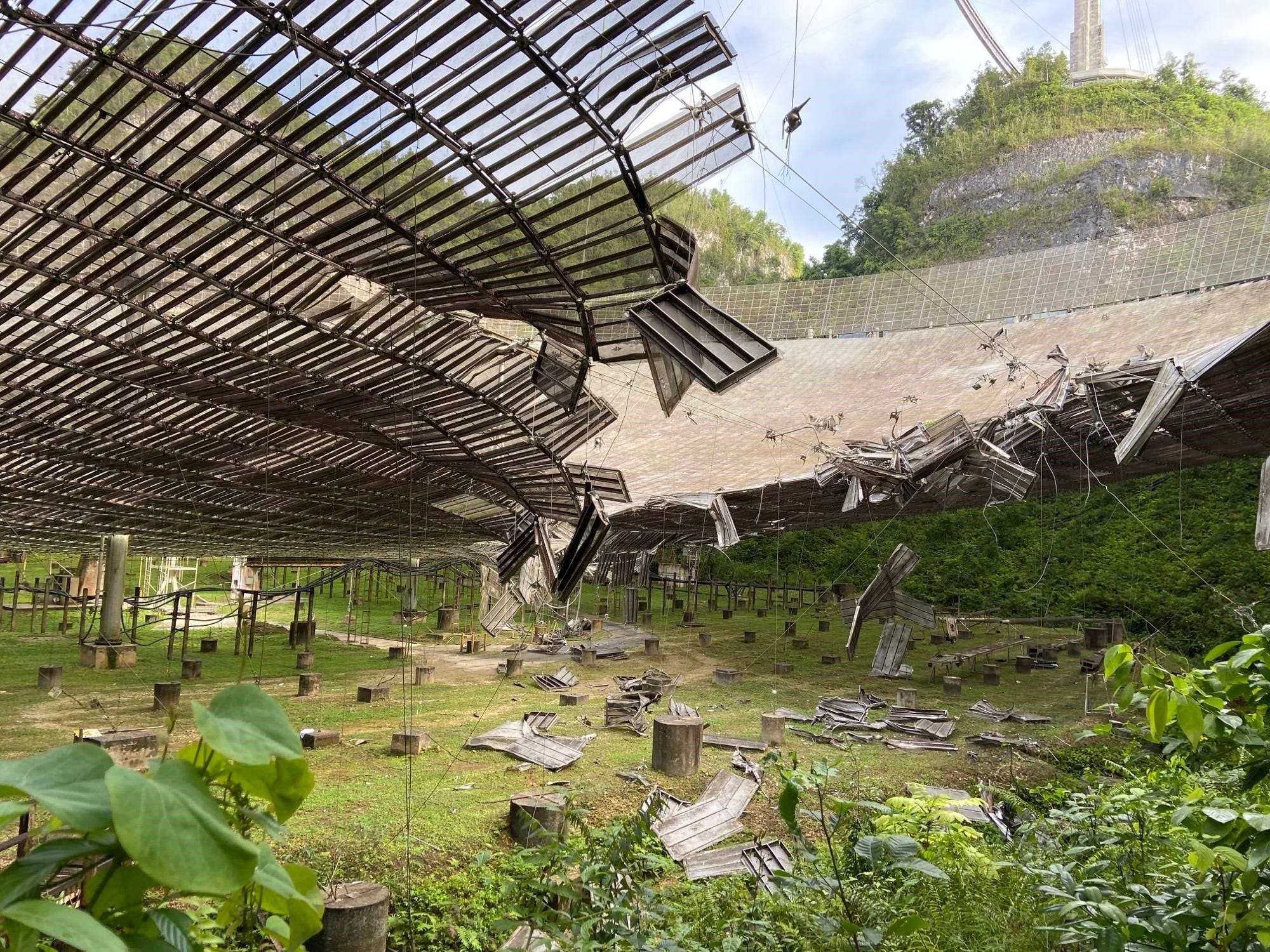
Telescope Used in Search for Extraterrestrial Life Badly Damaged in Freak Accident
Article by Dan Satherley August 16, 2020 (newshub.co.nz)
• Puerto Rico’s Arecibo Observatory is one of the world’s largest telescopes, and was featured in the 1997 Jodie Foster film ‘Contact’ and 1995’s Bond classic ‘Goldeneye’. As depicted in the movies, the observatory was often employed in the search for extraterrestrials.
• Earlier in August, the University of Central Florida – which operates the facility – says a metal cable snapped, tearing a 30m-long gash in the dish. (pictured above) The damage was so extensive, it smashed through several other cables and platforms that support the dish, causing debris to rain down on the ground below and making it harder for technicians to access the site.
• “We have a team of experts assessing the situation,” Arecibo director Francisco Cordova said. “Our focus is assuring the safety of our staff, protecting the facilities and equipment and restoring the facility to full operations as soon as possible, so it can continue to assist scientists around the world.”
• Arecibo has been a key part of the international SETI (Search for Extra-Terrestrial Intelligence) program, used to not only look for signals from outer space, but send them as well. The telescope is also a key part of Earth’s defense against incoming asteroids and comets that could potentially threaten life on Earth.
One of the world’s largest telescopes, used to look for extraterrestrial life, has been badly damaged in a freak accident.


Puerto Rico’s Arecibo Observatory is about three rugby fields wide, and featured in the 1997 Jodie Foster film Contact and 1995’s Bond classic Goldeneye.
The University of Central Florida – which operates the facility – says a metal cable snapped last week, tearing a 30m-long gash in the dish.
“We have a team of experts assessing the situation,” Arecibo director Francisco Cordova said.
“Our focus is assuring the safety of our staff, protecting the facilities and equipment and restoring the facility to full operations as soon as possible, so it can continue to assist scientists around the world.”
LiveScience reports the damage was so extensive, it “smashed through several other cables and platforms that support the dish, causing debris to rain down on the ground below and making it harder for technicians to access the site”.
FAIR USE NOTICE: This page contains copyrighted material the use of which has not been specifically authorized by the copyright owner. ExoNews.org distributes this material for the purpose of news reporting, educational research, comment and criticism, constituting Fair Use under 17 U.S.C § 107. Please contact the Editor at ExoNews with any copyright issue.
Arecibo Observatory, Puerto Rico, University of Central Florida